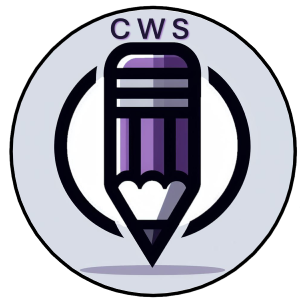 In the latest 2010 B2B Technology Collateral Survey Report business to business technology marketers found out what works when trying to influence their prospects.
In the latest 2010 B2B Technology Collateral Survey Report business to business technology marketers found out what works when trying to influence their prospects.
What was at the top of the list?
White papers.
Of course not all white papers are created equally. Done well, white papers can mean the difference between a prospect engaging in the sales process with you, rather than the competition. Done poorly, white papers can do more to make you look bad than influence your prospects to buy.
So whether you call them white papers, executive briefings, or special reports it’s important to take the time to make them the best they can be.
Here’s my list of six things that will help you make your next white paper as compelling and effective as it can be.
#1 – Write to a single ideal prospect
I know many of you may bristle at this one, but good white papers speak to one reader. Writing to a single reader focuses the white paper on how a product or service solves a particular issue for a particular person.
In other words, it keeps the white paper about the prospect.
Of course, it’s likely the white paper will be shared. And that’s ok. It’s even ok to write it knowing a secondary audience will read it. What’s not ok is trying to throw in all kinds of miscellaneous content “in case” the technical person, executive sponsor, etc. might see it.
Why?
It dilutes the impact the white paper has on the prospect you’re targeting. They’ll realize the content isn’t about them and their needs, but your need to speak to everyone involved in the sale. Second, the others you are targeting probably won’t be impressed either…for pretty much the same reason.
If you think a secondary audience is so important that you need to have a lot of content that addresses them, then you need to consider whether you really need two white papers.
#2 – Use an Outline
For those of you who vowed never to create another outline after getting through English Comp, I feel your pain. I even had a similar vow.
But as we all know, vows were made to be broken.
Despite what you may have heard (or been practicing) good white papers aren’t little 1-2 page projects. Most average 6-10 pages, and surveys like the B2B Technology Collateral Survey show readers prefer the length to get the content they want.
When you’re writing something that long, an outline will save you in time and stress. You won’t get partway into the project only to discover the sales VP wants to include a major topic you didn’t think of, you’re missing key research that will be difficult to get, or that the number of topics needs 12 pages instead of six.
The time to find those things out is in outline, not after serious time and effort has been invested in the writing.
#3 – Give it a Good Title
Unless the white paper is sent to them by a trusted peer, most prospects are going to encounter your white paper on your website. And chances are they’re going to have to fill out a form to access it.
Will your title be enough to get them to fill out the form? With their real information?
Consider the difference in these two titles.
- How to Structure Learning & Development Programs to Support Talent Management Initiatives
- Companies with the Best Talent Win: How Learning & Development is Vital to Strategic Talent Management
Now think about which you’d rather read. Which is more compelling based on the title?
There’s no doubt both titles could be improved, but here’s the lesson I’m trying to convey.
Don’t title your white paper like a research project in school.
The title has to sell the white paper and get your prospect to give up their personal information. Make it snappy. Make it speak to their pain points. Make it memorable. But please, oh please, don’t make it boring.
And what if you have a white paper with a boring title?
It’s an easy fix to re-title it and then test to see if your results improve. My guess is you’ll be astounded at the difference a better title can make.
#4 – Use Interesting Visuals
White papers are primarily a written media, but that doesn’t mean you should create something that’s a solid block of words. Good white papers need good design. And good design goes beyond choosing a font that’s legible and large enough for easy reading.
Consider what elements could also be represented visually. Are you contrasting a before and after setup? Recap that information in an easy to read, color coded chart. Got a great quote from an industry pundit? Use a large callout like you see in magazine articles and put their picture with it. Are you talking through a technical process? Include a diagram or flow chart.
You get the idea.
Visuals help break up the large amount of text in most white papers. They’ll help your visual learners retain the information. And they’ll give skimmers a way to quickly absorb key points.
So make sure that in addition to a good writer, you also have a good designer who can help make that white paper look its best.
#5 – Include Case Studies
White papers are a great way to maximize the impact of your customer success stories. Prospects want to see themselves in the white paper. When you include case studies, they can.
Including case studies also adds credibility to what you’re saying. It’s the proof that what you’re saying really does work, and for real people.
What if you don’t have any success stories? Or none that will fit because it’s a new product or service?
Don’t think this powerful white paper element is out of reach. Make one up in the form of a hypothetical before and after scenario. It’s a tried and true method that’s worked in training programs for years.
Just be careful to do a good job. Be detailed and use the persona information you’ve got to make it realistic.
Stories are so powerful and people are so wired to absorb and remember them that even hypothetical case studies will help your solution stick in the minds of prospects. And when you do get an actual case study you can include, you can update the white paper with it later.
#6 – Have a Call to Action
What would you like prospects to do once they’ve read the paper?
Here’s some examples of what might be on your wish list:
- Pass it along to colleagues
- See a product demonstration
- Fill out a needs assessment
- Visit a microsite
- Contact a sales person
- Attend a webinar
Depending on the focus of your white paper and where it falls in the sales process, any or all of these might be appropriate next steps.
But here’s the thing.
Do you tell them to take that next step?
In most cases, the answer is a resounding no. Be sure to include a call to action that asks prospects to take that next step. In fact, it should be so strong they’ll be encouraged to take it right away. After all, you don’t want them to put down the paper, get distracted with the million other things on their list, and forget about you for the next two months.
This is so critical I’d recommend going through your existing white papers and adding good calls to action at the end if they aren’t already there. It’s a relatively quick investment of time and energy, and you’ll be glad you did.
So there you have it. Those are six of my must-have elements for a compelling and effective white paper. What are your must-haves for white papers?
*Photo courtesy of Brenda-Starr
